"D’altra parte, pretendere di stabilire l’anno esatto per una emissione monetale greca, priva di precisi elementi intrinseci, non è di noi mortali."
"On the other hand, to claim to establish the exact year for a Greek coinage, lacking precise intrinsic elements, is beyond us mortals."
— Giacomo Manganaro1
The obols of Syracuse represent an important chapter in the monetary history of ancient Sicily. These small silver coins, weighing approximately 0.60-0.75 grams, served as the city's first systematic fractional currency before being superseded by the more famous litra system around 461 BC. Long overshadowed by Syracuse's tetradrachms and dekadrachms, the obols tell a story of economic transition, political change, and monetary innovation in the 5th century BC.
For over a century, Erich Boehringer's study has provided the chronological framework for understanding these coins. However, an overstruck obol that preserves traces of an underlying Aitna issue requires a revision of the accepted sequence. By examining this overstrike alongside analysis of the Demareteion dekadrachms, we can demonstrate that the most accomplished obol issues—the Series XIIe "Demareteion" obols—actually predate those traditionally considered earlier, fundamentally reordering our understanding of Syracuse's monetary transition from tyranny to democracy. This revision reveals that Syracuse's most extraordinary coinage celebrated not the distant triumph at Himera, but the immediate struggles for democratic autonomy that defined the city's political rebirth.
The Traditional Boehringer Sequence
Erich Boehringer's systematic study of Syracusan coinage established the framework still used today. His analysis of die links and stylistic progression created what appeared to be a chronologically consistent sequence for the obol series. However, Boehringer worked without certain pieces of evidence that have since emerged, particularly the overstrike evidence that challenges the accepted chronology.
Series XI (nos. 286-291): The Early Issues
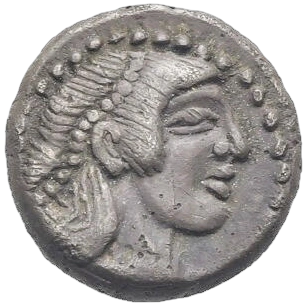
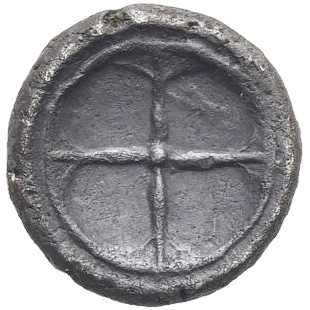
Astarte S.A., Auction 23 (28 Oct 2024), lot 14 - Archive link
- Obverse: Head of Arethusa facing right, wearing pearl taenia; hair brushed forward; surrounded by a beaded border.
- Reverse: Four-spoked wheel with hub, single or double rim, and with struts
- Corresponding tetradrachms: Boehringer 268–278 (R185-191) (and earlier issues)
The Series XI obols represent the beginning of systematic fractional coinage at Syracuse. These issues feature the classic Arethusa head with pearl taenia and the distinctive four-spoked wheel reverse that would become the standard type for Syracusan small silver.
Series XIIa-d (nos. 362-370): The Middle Period
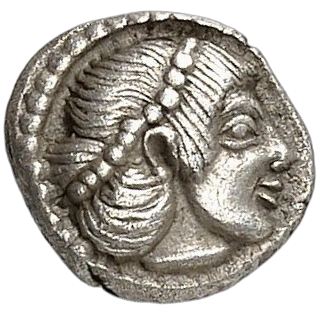
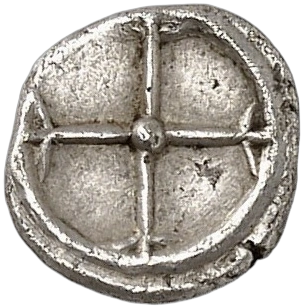
Collection of the author - view coin page
- Obverse: Head of Arethusa facing right, wearing pearl taenia; hair brushed forward; surrounded by a beaded border.
- Reverse: Four-spoked wheel with hub, single or double rim, and with struts
- Corresponding tetradrachms: Most belong to Series XIId Boehringer 345-355 (R243-258). Few examples can be assigned to other sub-series: O179 to XII a; O185-186 to XII b; O187 to XII c.
The Series XIIa-d obols continue the established iconography but show subtle refinements in style and execution.
Series XIIe: The "Demareteion" Obols
The Series XIIe obols represent a significant departure from earlier issues and provide the key to understanding the true chronology of Syracuse's fractional coinage. These are the obols contemporary with the famous "Demareteion" dekadrachms, and they introduce several innovations that would influence coinage throughout Sicily.
Series XIIe: Boehringer 392–405 (O199/R277 - O209/R285)
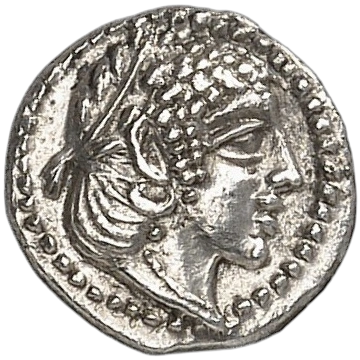
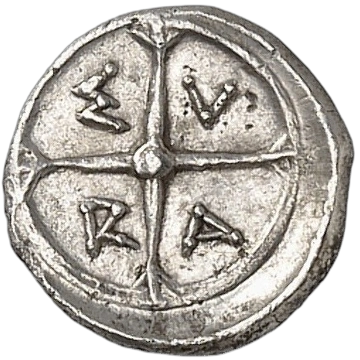
Collection of the author - view coin page
- Obverse: Head of Arethusa facing right, wearing olive laurel wreath, circular (exception O209 crescent) earring, and simple necklace; surrounded by a beaded border.
- Reverse: Four-spoked wheel with hub, single or double rim, and with struts; Σ-Υ-P-Α within the quarters.
- Corresponding dekadrachms: Boehringer 374–378 (R264-R267)
Here we see the first major change: Arethusa now wears an olive laurel wreath instead of the traditional pearl taenia. The olive crown represents victory, likely commemorating specific military successes during Syracuse's transition from tyranny to democracy. The reverse introduces the ethnic letters Σ-Υ-P-Α within the wheel's quarters, establishing a typological pattern that was copied by other Sicilian cities.
These obols are contemporary with the famous "Demareteion" dekadrachms, sharing not only chronology but purpose. Both represent extraordinary issues, likely struck as military bonuses (aristeia) rather than regular circulation coinage. The dating of these issues has been controversial, with traditional scholarship placing them in 480 BC to commemorate the victory at Himera4.
However, scholarship has challenged this traditional dating through multiple lines of evidence. Most significantly, D. Knoepfler demonstrated that the dekadrachms employ kappa in their legend rather than the archaic koppa, indicating they were struck after Syracuse's "orthographic reform of Hieron" in 478 BC2. This effectively rules out the traditional 480 BC date, as Syracuse had not yet adopted the kappa at that time.
Building on this chronological foundation, Manganaro proposed that the dekadrachms were issued as aristeia—military prizes for victorious soldiers. Diodorus records that in 461 BC "the Syracusans honored their elite troops, 600 in number, the architects of victory, awarding each a mina of silver as a prize for valor"3. Since a mina equals ten drachmas, the dekadrachms would have been perfect for such payments. This historical context, combined with the orthographic evidence, suggests a date of circa 466-461 BC for both the dekadrachms and their contemporary obols.
The shift from the traditional 480 BC dating has profound implications. Rather than commemorating the distant victory at Himera, these extraordinary coins likely celebrate Syracuse's more immediate struggles for democratic autonomy following the end of the Deinomenid tyranny. The olive crown on Arethusa's head would thus represent not Carthaginian defeat, but victories in the civil conflicts that established democratic government.
Series XIIe: Boehringer 406–407E (O210/R286 - O210/R287E)
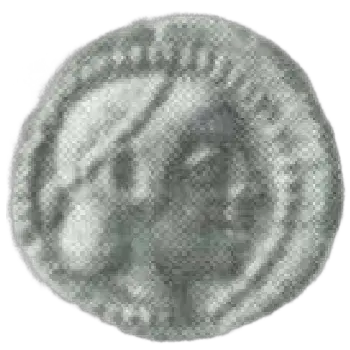
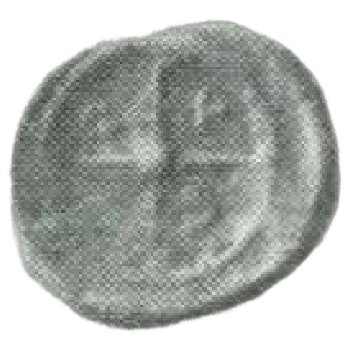
Boehringer 406 (this coin) - Archive link
- Obverse: Head of Arethusa facing right, wearing pearl taenia, circular (exception O209 crescent) earring, and simple necklace; surrounded by a beaded border.
- Reverse: Four-spoked wheel with hub, single or double rim, and with struts; Σ-Υ-P-Α within the quarters.
- Corresponding dekadrachms: Boehringer 374–378 (R264-R267)
The final obols of the Series XIIe show a return to the pearl taenia on the obverse, indicating a return to the more traditional Arethusa iconography while maintaining the innovative ethnic-in-quarters reverse.
The Critical Evidence: Aitna and the Overstrike
The key to understanding the true chronology of Syracuse's obol series lies in two pieces of evidence: an obol of Aitna and a Syracusan obol overstruck upon it. Overstrike evidence is considered definitive in numismatic chronology because it provides absolute proof that the underlying coin predates the overstruck coin—a relationship that cannot be disputed through stylistic arguments alone. Together, these pieces provide clear proof that the traditional Boehringer sequence must be revised.
The Aitna Obol
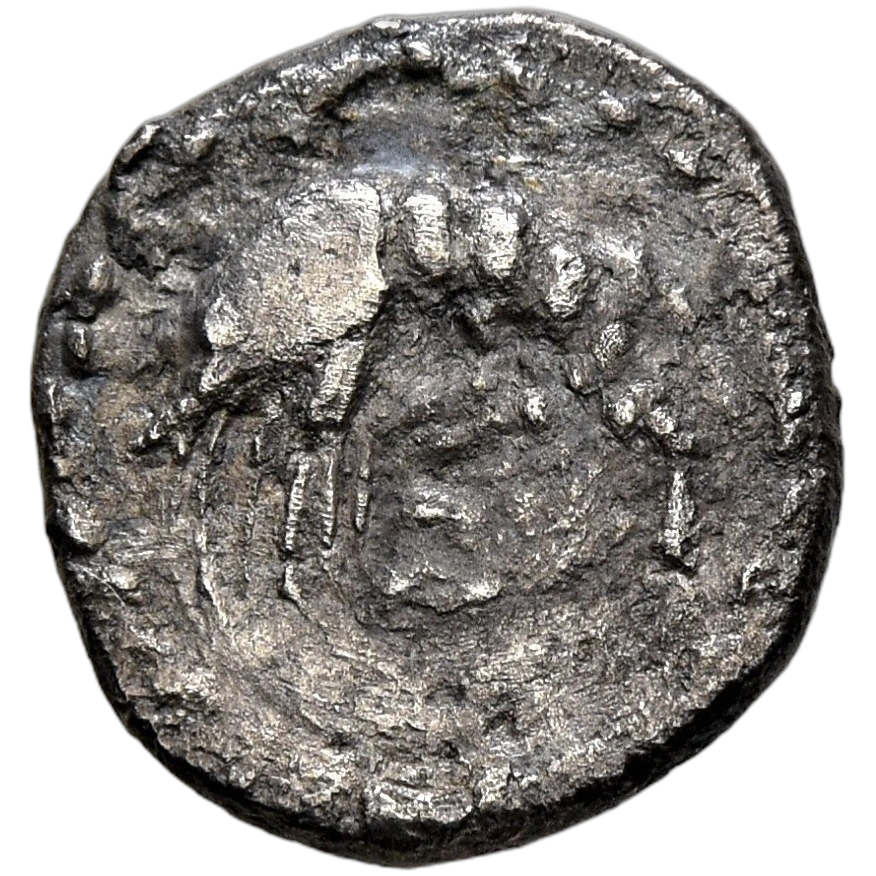
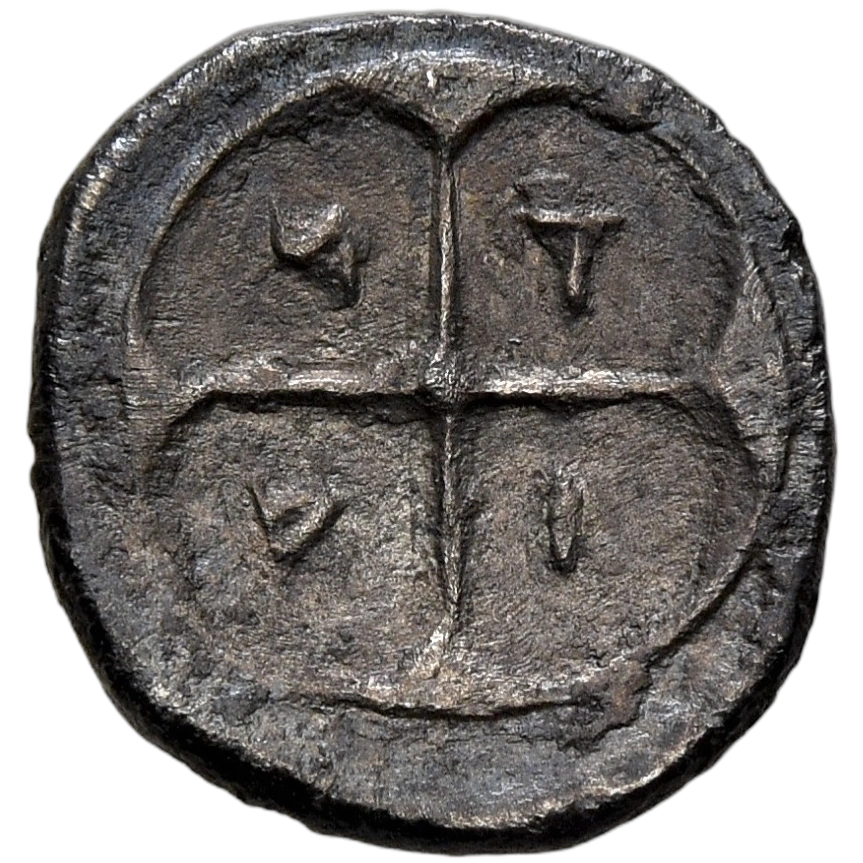
Leu Numismatik, Web Auction 34 (5 July 2025), lot 95 - Archive link
- Obverse: Shrimp left; surrounded by a beaded border.
- Reverse: Four-spoked wheel with hub, single or double rim, and with struts; A-I-T-N (ΑΙΤΝΑ) within the quarters.
This obol of Aitna provides important chronological evidence. Aitna was established in 475 BC by Hieron I on the site of Katane, and its population was transferred to Inessa in 461 BC—giving us a precise 14-year window for any Aitna coinage. The shrimp obverse type reflects the city's coastal location, while the reverse directly copies the wheel-with-ethnic design pioneered by Syracuse's Series XIIe obols.
As Manganaro observed, the Aitna engraver's adoption of this design proves he must already have known the 'Damareteic' obol of Syracuse, establishing the chronological priority of the Series XIIe innovation. This proves that the Series XIIe obols with their ethnic-in-quarters design predated the Aitna issues, which must themselves predate 461 BC.
The Overstruck Syracuse Obol
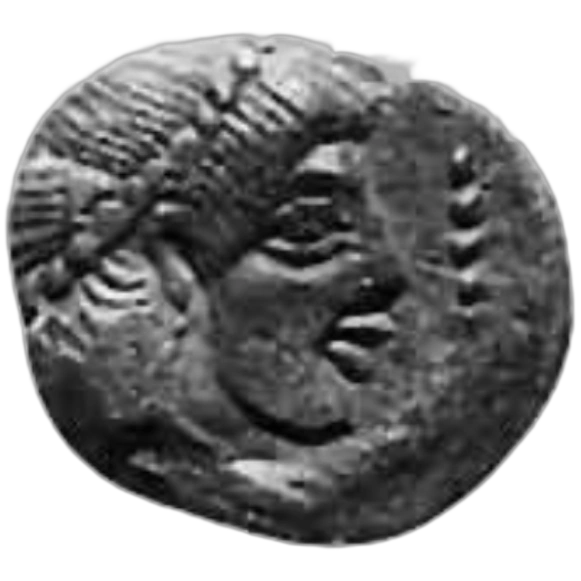
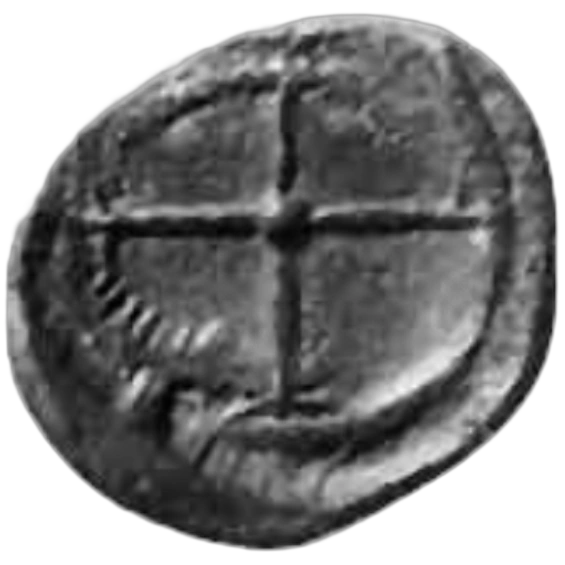
Reproduced from Manganaro, *Dall'obolo_alla_litra* (Pl. 23, 18)
- Obverse: Head of Arethusa facing right, wearing pearl taenia; hair brushed forward; surrounded by a beaded border.
- Reverse: Four-spoked wheel with hub, single or double rim, and with struts; Traces of shrimp visible in 1st and 3rd quarters, evidence of the underlying Aitna obol
This Syracuse obol B. 365 from Series XIId was overstruck on an Aitna obol. Under careful examination, traces of the segmented body of a shrimp are clearly visible between the spokes of the Syracusan wheel.
Since the Aitna obol copied the Series XIIe ethnic-in-quarters type, and this overstruck coin shows a Series XIId obol struck over an Aitna piece, we can now arrange the sequence: Series XIIe → Aitna → Series XIId.
This overstrike represents economic recycling of silver and documents a specific historical moment when Syracuse returned to regular obol production after the extraordinary Series XIIe / Demareteion issues, while incorporating silver from the defunct Aitna mint.
The Revised Timeline
The evidence requires a revision of the traditional Boehringer sequence:
1. Series XIb obols (286-291) - circa 470-466 BC
2. Series XIIe / Demareteion obols (392-407E) - circa 466-463 BC
3. Aitna obols - circa 463-461 BC
4. Series XIIa-d obols (including B. 365) - circa 461-460 BC
Boehringer's sequences therefore must be modified, confirming the sequence XIIe → Aitna → XIId established by the overstrike evidence. This revision supports G.K. Jenkins' proposal to place Series XIIa-d after Series XIIe5. Jenkins, in the second edition of his Ancient Greek Coins, also supported a dating around 465 BC for the Damareteion6. The convergence of evidence from overstrike analysis, orthographic dating, and historical documentation provides a compelling case for revising the Boehringer sequence.
As Manganaro observed, this revision represents more than mere chronological adjustment. It reflects our understanding of Syracuse's transition from tyranny to democracy, from fixed-price markets to inflationary conditions that necessitated the shift from obol to litra coinage. The Demareteion issues mark not the culmination of tyranny, but rather an extraordinary moment of democratic celebration.
Corresponding Tetradrachms and Dekadrachms (Reverses)▼
Below are the reverse types of the tetradrachm and dekadrachm groups that correspond to the Syracusan obols.
Boehringer 268–278 (R185–191)
Corresponding to Series XI obols
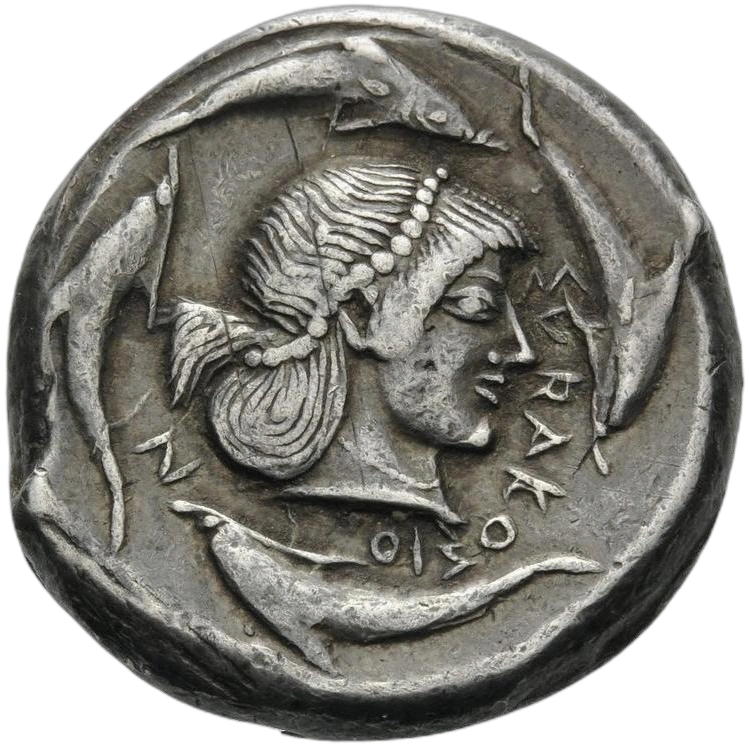
Nomos, Obolos 8 (2 Dec 2017), lot 101 – Archive link
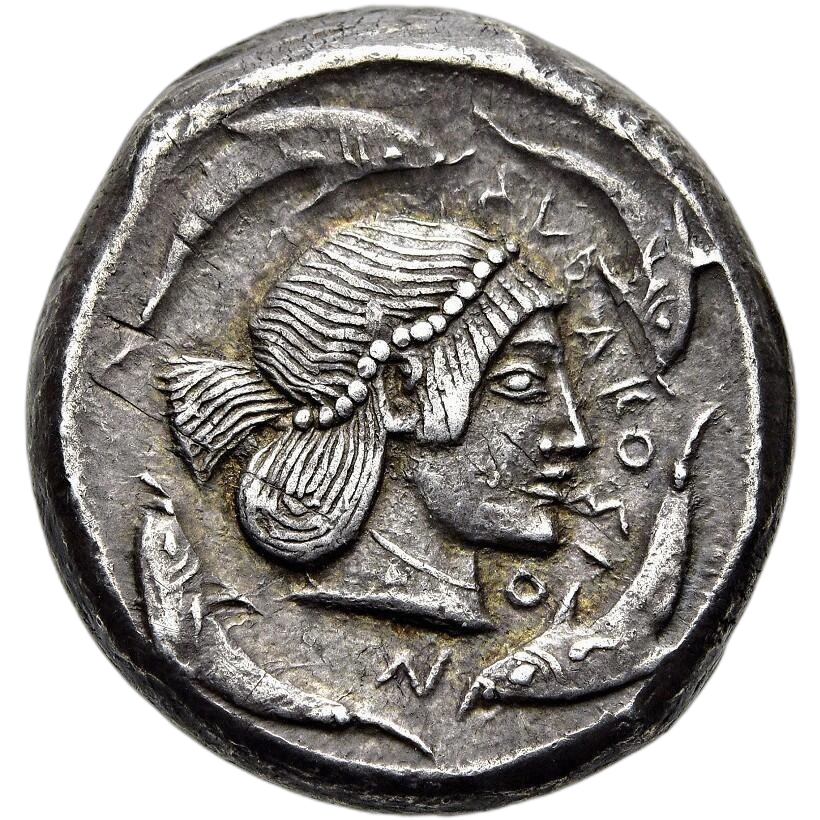
Gorny & Mosch, Auction 297 (9 Oct 2023), lot 1079 – Archive link
Boehringer 345–355 (R243–258)
Corresponding to Series XIIa-d obols
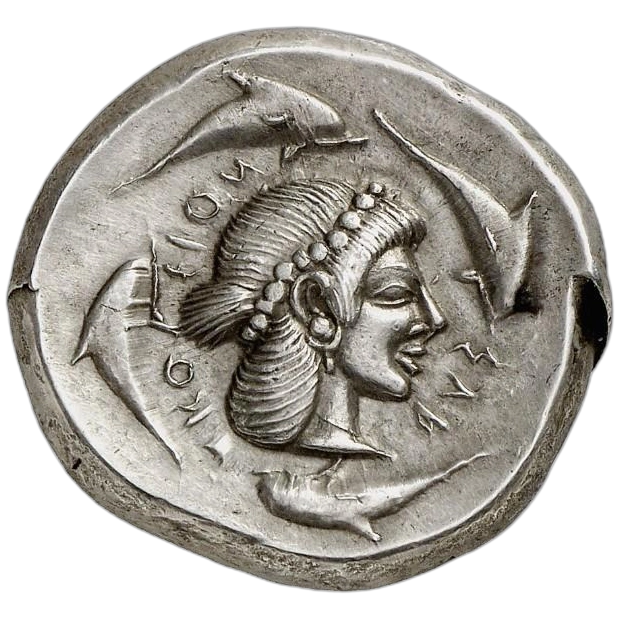
Fritz Rudolf Künker, Auction 304 (19 Mar 2018), lot 169 – Archive link
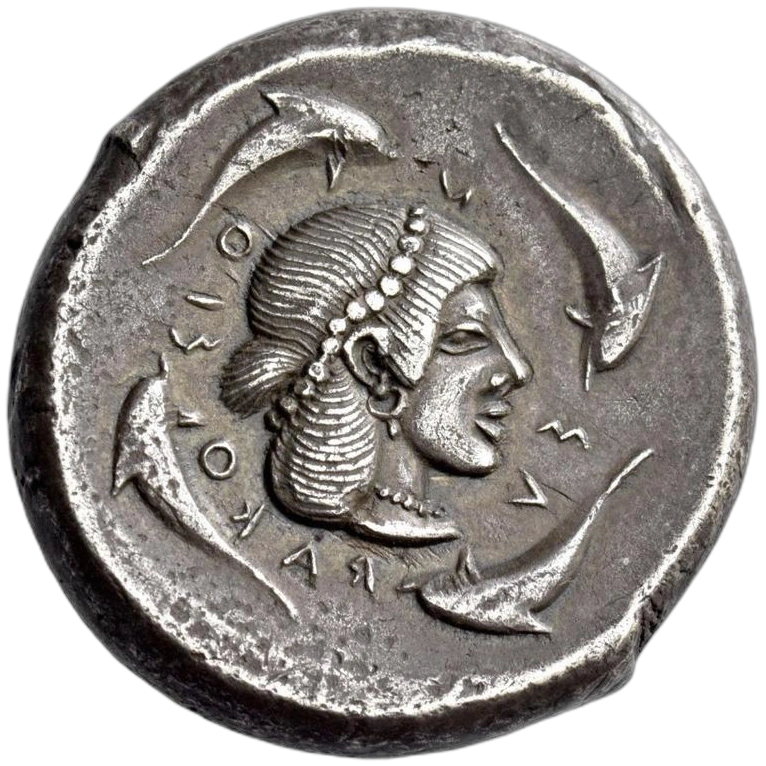
Numismatica Ars Classica, Auction 114 (6 May 2025), lot 69 – Archive link
Boehringer 374–378 (R264–267) - the "Demareteion" Dekadrachms
Corresponding to Series XIIe obols
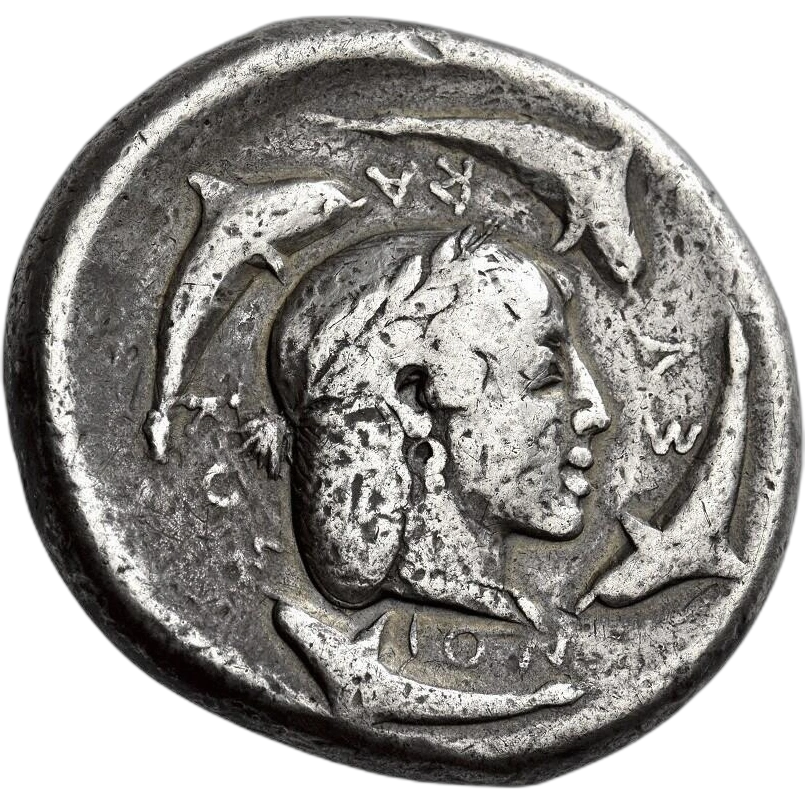
Numismatica Ars Classica, Auction 150 (2 Dec 2024), lot 555 – Archive link
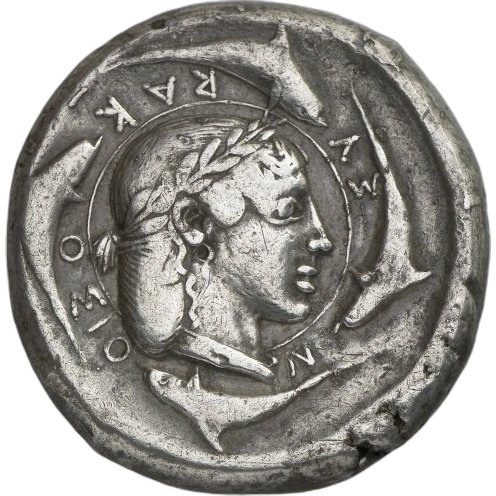
The New York Sale, Auction 27 (4 Jan 2012), lot 163 – Archive link